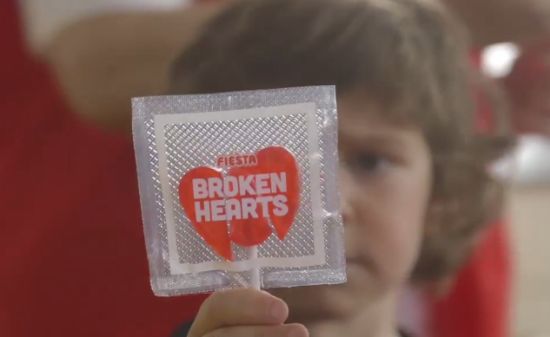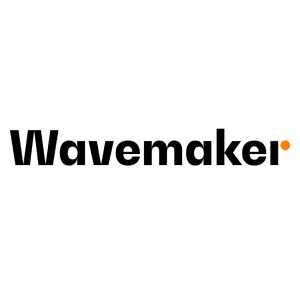
MEC@Cannes - Key Trends and Takeaways

After a turbulent year in politics and world affairs the mood on the Cannes Croisette was more subdued than normal. Even the Daily Mail cancelled their big yacht. Yet Cannes still delivered. Ed Sheeran played a private function, Dame Helen Mirren and Sir Ian McKellen graced the Palais to add showbiz sparkle, and the hipster beard was out in force.
Importantly the core reason for the festival continued to shine out: the great ideas that make a difference and the topics of conversation, gossip and debate that will impact our industry in the future. Here’s our round-up of the top trends and key takeaways from this year’s Cannes Lions Festival of Creativity.
1. Data BAU (business as usual)
Data came of age at Cannes 2017.
While in previous years data has been used mainly in short term activations and PR stunts, 2017 demonstrated how advertisers are now deploying data in a more integrated way, helping to make campaigns scalable and sustainable.
- Thanks 2016, it’s been weird. Spotify’s campaign across 11 countries and with 164 localised data stories used their data set to spot music listening behaviour that told a story about zeitgeist events. “Dear 3,749 people who streamed ‘It’s the end of the world as we know it’ the day of the Brexit Vote… hang in there”.
- Snickers created an algorithm - the Hungerithm - to measure levels of frustration expressed online. In partnership with 7-Eleven stores, the hangrier the internet got, the cheaper the snickers bar became, with the price changing 5,000 times in five weeks.
- In Australia, Campbell's Soup created 2,000 individualised 6” pre-roll YouTube executions, tailored for the video they were about to watch, and in France Canal+ launched the hit series Pope by spontaneously answering people’s nasty social posts with quotes from the bible.
Across the world advertisers are incorporating data in more systematic ways in to their communications.
What’s next? Well, Cannes gave us a glimpse in the form of Reddit’s Anti Evil team and the machine learning projects from Google’s Perspective engineers, who are busy tackling cyber-attacks, state sponsored censorship and cyber bullying, and turning up or down the ‘toxicity’ threshold and filtering for tone. Well-intentioned programmes or alarming west coast censorship? That’s for you to decide.
What this means for brands
For brands, data is moving from niche programmes to business as usual. It is being used more consistently to help identify the insight, augment the creative process, and deploy the work in a tailored and personalised way. Artificial intelligence and machine learning are only going to make things faster and take away resource-heavy, low-value tasks – freeing up time for more creative inspiration. So make data work for you: activate the data that lives within your business, in the world and in the social web to create more effective communications.
2. Diversity for good, and for good work
The topic of gender equality got stretched in Cannes to a broader definition of diversity, beyond just gender to include race, religion and sexuality. The conversation also turned to the value of diversity to creativity.
The Cannes audience heard from neuroscientist Dr. Beau lotto that in terms of creative inspiration, our brains typically make small jumps, not big jumps, as we’re limited to our own hidden assumptions about the world around us. But diversity can help. Combining diverse groups of people with different hidden assumptions helps create bigger jumps, as things which require big jumps for one group can in fact only be small steps for others.
In practice, this is why the naïve-expert double act works so well; bringing together those who can ask great questions about a topic (naïve), with those who can help tackle those great questions (the experts) to help make jumps to new ideas.
What this means for brands
There have been plenty of papers written on the benefits of a diverse culture in the workforce, but don’t forget the benefits of diversity in the innovation and creative process. So let’s make it happen.
“Diversity is not a trend, it is a value you need to live and breathe. You need to embrace it and act on it.” - Adrien Koskas, General Manager, L’Oréal Paris UKI.
“Diversity first and foremost is just good business.” - Joshua Graff, LinkedIn Country Manager and VP, EMEA
3. Evergreen wisdom: passing the mum and dad test
Cannes thrives on the shiny new trend. Amazon buys Whole Foods, media content businesses merge, media agency businesses merge, large Chinese corporates acquire ‘horizontally’ (acquiring businesses in completely different sectors) at a ferocious pace. New technology is helping with the filter bubbles, fake news, verification and brand safety… Among the noise, it was refreshing to hear the clarity of thinking and evidence-based approach of some stand out speakers at the event.
Speakers such as Keith Weed (CMO of Unilever), Beau Lotto (Neuroscientist from the Lab of Misfits), and Dan Ariely (behavioural economist and author of Predictably Irrational) all brought the conversation back to some of the central truths in advertising and marketing:
- The complex world of digital media viewing is in fact very simple, when viewed through the lens of the consumer as the starting point
- We’re long overdue a simple integrated measurement approach that doesn’t involve digital media players marking their own homework
- Advertising’s real benefit is medium to longer term; we must be careful not to measure solely on the immediate signal response.
- And a reminder that real insight comes from a deep understanding of human behaviour and how we perceive the world; data is only information, it needs context and perspective to become genuinely meaningful.
What this means for brands
New rules are being remade, but some of the old rules still apply. While we test and learn new opportunities, don’t forget the fundamentals: do we really understand the consumer decision journey, how will our communications make a difference, and what are we putting in place to know whether it’s had an impact in the short, medium and long term? As Keith Weed said, whatever you’re doing, check it passes “the mum and dad test” and just makes sense.
4. Purpose driven marketing: Hero or Hoax?
Purpose driven marketing was all the buzz a few years ago. But unlike a lot of trends that rise and fall at Cannes, this one’s still going strong.
On the main stage, Unilever revealed that their Sustainable Living Brands are growing 50% quicker than the rest of the portfolio. Syl Saller, Chief Marketing and Innovation Office at Diageo, spoke about the financial success of Diageo’s brands when they get Purpose Driven Marketing right. In addition to that, much of the work that won coveted Lions this year is purpose driven work.
But there were pockets of the Palais where questions were being asked.
Paul Bainsfair of the IPA asked if the success of purpose driven marketing is just “truthiness” (yup that was a new one for us too) – the desire to believe something is true before the evidence proves it.
Dove’s Campaign for Real Beauty is often cited as a campaign that shows the business benefit of purpose driven marketing. However, Nigel Hollis of Kantar Millward Brown outlined that although there is significant evidence showing the effect of the campaign on sales there is little evidence that it has had any effect on the self-esteem of women.
What this means for brands
It feels right, and there are case studies that can point to success. However, the bullet-proof evidence case for the value of purpose driven marketing still eludes us for the moment. One thing’s for sure, brands should only embrace a purpose-led approach if they are willing to jump in with both feet, and it must fit with the brand’s mission. Consumers spot a CSR stunt (and there were a few of those entered in to Cannes this year) from a mile off.
5. I wish I’d done that
Going back to the core reason for the festival – simply great ideas that make a difference – we were in for a treat. Whether using customer data, virtual reality, artificial intelligence, packaging or adapting the environment we live in, there were some crackers that earned trophies.
Here are some of our favourites. Work that makes you think “I wish I’d done that!”
- Adidas Green Light Run: How do you help runners frustrated by red traffic lights during their city run? Adidas solved the problem by using police department traffic data to map a timed green traffic light running route through Tokyo. Inspired.
- Piruleta Broken Hearts: The Piruleta little heart shaped lollipop sweets are well loved in Spain but many break during the manufacturing process and are thrown away. Every problem is an opportunity. Piruleta partnered with a foundation for kids with heart disease, sold the ‘broken heart’ sweets, influencers joined the story, and raised thousands for charity. A wonderful ‘micro hug’ from the sweet brand.

- Los Santos Pride: How did Pride push the agenda for LGBT+ issues in Sweden? Well not with ads, or influencers, but with gamers. Picking one of the most brutal games on the market, Grand Theft Auto, Pride Sweden created a special download which created a full Pride march right through the GTA cityscape. While gangsters fought, floats rolled down the city streets, disco beats rang out and the big love spread. In a game of extreme violence, the pride march itself was simply indestructible. Love always wins.
By Raj Gupta, Chief Strategy Officer, MEC APAC & Stuart Sullivan-Martin, Chief Strategy Officer, MEC EMEA













